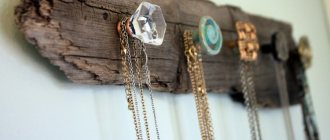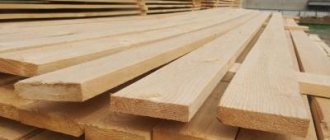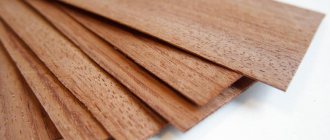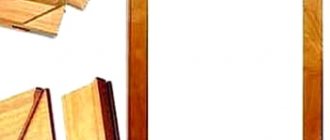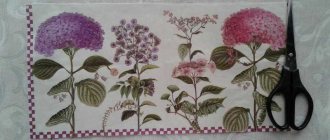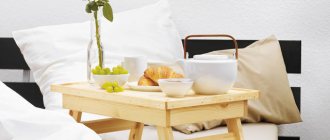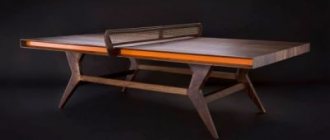Pros and cons of using screens
Lightweight furnishings are attractive for their versatility: they look equally good in both spacious and small rooms. The products have many advantages and therefore are very popular at the moment.
The advantages of these decorative elements include:
- light weight and compactness, allowing you to move the item from one place to another;
- low price provided you make the screen yourself from scrap materials;
- the possibility of increasing the area of the structure due to additional elements in the form of pockets, shelves or hooks;
- many options for decorating a room thanks to the variety of screen designs;
- the ability to create a screen partition with your own hands in accordance with the size of the room.
Minor disadvantages include:
- lack of sound insulation;
- instability of the structure.
Since the product plays a decorative role in the room, the disadvantages can be considered insignificant.
Variety of species
If previously screens were simple and of the same type, modern models amaze with the variety of shapes, sizes, materials and design options. To decide to make a screen partition for a room with your own hands, you should get acquainted with the various design options.
You need to choose a suitable model based on the shape and size of the room, interior features and your preferences.
Smania Damir
The elegant zoning of a room with a three-leaf Damir screen will fit into the design of any room, be it a bedroom, dining room or living room. This design will allow you to effectively divide the room into independent zones, and, if necessary, easily restore the unity of the space. Smania Damir is made from valuable and carefully processed wood varieties, including wenge, rosewood and walnut. The strict geometric pattern of the model is complemented by stylish elements made of polished bronze or nickel.
In the photo: Art Deco screen Smania Damir .
Casement model
A classic product consisting of a durable frame, the elements of which are connected to each other either using piano hinges or parts made of thick fabric or leather.
The most common are three-leaf structures, but four-leaf ones are also found. The number of elements depends on the area of the room. The height of the product reaches 180-200 cm.
Bolzan Paravento Sightly
Paravento Sightly Screen offers various adaptation and personalization options to suit the needs of any client. Each panel is manufactured with a solid wood frame, covered in a fabric chosen by the customer, and is available in two widths (30 or 60 cm). You can also choose the number of panels: 3, 4 or 5.
In the photo: striped Bolzan Paravento Sightly made of five panels.
In the photo: Bolzan Paravento Sightly made of four panels.
Single screen model
This partition consists of one continuous leaf. For stability, it is either attached to the floor or fixed with one edge to the wall. This deprives the product of mobility.
Single-screen screens are often installed in offices to delimit workspaces, in kitchens to highlight a dining area, in studio apartments to designate the living, sleeping and kitchen areas of space.
Single-leaf partitions have also found their use in small cafes or restaurants to separate tables from each other.
Transparent model
A decorative element of the interior of any shape and size, having an openwork fabric that does not hide what is on the other side. Either translucent fabric or mesh is stretched over the frame. Products of this type are used only for decorating the room.
Note!
Do-it-yourself installation of interior doors - preparation of the structure, selection of doors, installation step by step + instructions from professionalsDIY shoe rack - types of designs, manufacturing materials, step-by-step master class with simple diagrams and drawings
Do-it-yourself sliding wardrobe - manufacturing manual with a full description of the stages, types of structures, choice of manufacturing materials (photo + video)
Making your own screen
An ideal option for independent creativity would be to make your own screens from wood and fabric. This classic model will look perfect in any interior. You can assemble it easily and quickly if you use the tips and recommendations on how to make a screen with your own hands.
The essence of the work is that you need to stretch a piece of textile onto a wooden frame. The product model can be any: book, folded or single-screen.
The main task is to decide in which room the structure will be located and choose the fabric of the desired color so that it fits harmoniously into the decor.
The process of creating a screen begins with preparing the essentials:
- bars in the amount of 12 pieces measuring 170x2 cm and 12 pieces measuring 60x2 cm;
- piece of fabric;
- paint and varnish products;
- glue;
- decorative elements;
- power tools;
- fasteners;
- sandpaper.
Next you need to act in accordance with the step-by-step instructions:
- Using a ruler and pencil, mark the bars to assemble the frame.
- In the designated places, make cuts up to half of the wooden parts.
- Using a chisel and hammer, make a depression in the cut area.
- Assemble the wooden parts into the frame, first smearing the joints with wood glue.
- After the glue has dried, sand the finished frame with sandpaper and varnish.
- To strengthen the structure, fix the joints of the frame with screws to the metal corners.
- After making the frame, you can prepare the textile part of the screen. The fabric cut must match the size of the frame with allowances for hems. If it is not possible to use a whole piece, you can create a patchwork composition.
- Using a furniture stapler, secure the fabric to the frame, starting from the top. To prevent the fabric from sagging in the future, it must be fixed with tension.
- The structural parts covered with fabric must be connected with furniture hinges, piano hinges or textile elements.
Piano hinges or fabric connections allow the product to be folded in any direction.
Patina Torcello
Patina Torcello is a double-leaf screen with an original design in the English style. The rich relief is made of gold leaf, with a patina and an aged effect. The name of the model comes from the sparsely populated island of Torcello in the northern part of the Venetian lagoon. Immerse yourself in the world of luxury and inexpressible charm of Italy!
In the photo: Patina PA - Torcello Screen in a classic style.
In the photo: a bridge in the settlement of Torcello.
Flexible tube partition
Among modern models, bamboo structures are very popular, but they are quite expensive. You can make a screen from cardboard tubes from fabric rolls and style it as bamboo branches.
To assemble it, you should prepare the necessary material:
- From 15 to 30 cardboard blanks, depending on the desired length of the product;
- cutting tools;
- marking accessories;
- awl;
- decorative durable thread;
- acrylic paint in cans in a color that imitates wood or stems.
Next you should act in accordance with the recommendations:
- Prepare tubes of different lengths to give the product a natural look.
- Paint the workpieces.
- Use an awl to make holes at the upper and lower ends of the tubes.
- Thread a cord through the holes and connect the structural elements.
This decorative piece of furniture will resemble a picket fence made of reeds or bamboo. It will be lightweight and can be conveniently rolled up. It can be given any shape to fit into the interior of the room.
It should be remembered that products made of cardboard are afraid of moisture, and a structure made of tubes will not be as reliable as a self-made wooden screen.
With a little creative ingenuity and some effort, you can make an original piece of furniture yourself and give your home an exclusive look.
Boca Do Lobo Jay
The Jay screen is a mysterious piece of furniture with an amazing pattern that can transform the surrounding space. The screen has 4 sections, which greatly simplifies its transportation and storage. The factory offers mahogany, beech and oak as materials. The screen is available in black or white.
In the photo: stylish Boca Do Lobo Jay .


